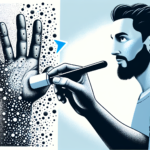In a world that constantly demands innovation and problem-solving, creativity has become an invaluable asset. Whether you are an entrepreneur, artist, scientist, or just someone looking to infuse more originality into your daily life, unlocking the power of creative thinking is essential. Through various techniques and practices, anyone can enhance their imagination and expand their cognitive horizons. Below are some proven strategies to help tap into your creative potential.
1. Mind Mapping
Mind mapping is a visual thinking tool that helps structure information, encouraging better understanding and retention. By creating a visual representation of your thoughts, you can see connections, hierarchies, and relationships between different ideas. Start with a central concept and extend related ideas outward, connecting them with lines and branches. This technique can act as a brainstorming process, generating new angles and perspectives on a given topic.
2. Divergent Thinking
Divergent thinking involves generating many potential solutions, ideas, or options rather than focusing on a single correct answer. It encourages flexibility, originality, and the exploration of multiple pathways. Techniques such as brainstorming, free writing, or the SCAMPER method (Substitute, Combine, Adapt, Modify, Put to another use, Eliminate, Rearrange) can foster this type of thinking. By allowing your mind to wander and make unusual connections, you can discover novel ideas and approaches.
3. Daily Creativity Practice
Creativity is like a muscle; the more you use it, the stronger it becomes. Dedicate a portion of your day to creative activities, whether it’s writing, drawing, playing a musical instrument, or even engaging in creative hobbies like cooking or gardening. Consistent practice helps stimulate your brain’s creative centers and enables you to develop a habit of thinking outside the box.
4. Exposure to New Experiences
New experiences can act as a catalyst for creativity by exposing you to different perspectives and ideas. Travel to new places, try new activities, meet new people, or learn about different cultures. These experiences add to your mental toolbox, enriching your imagination and providing fresh inspiration.
5. Collaboration
Working with others can significantly enhance creative thinking. When you collaborate, you introduce diverse viewpoints and skill sets into the mix, which can spark innovative ideas and solutions. Co-creating with friends, colleagues, or even strangers can bring about synergies that you might not achieve alone. Encourage open communication, active listening, and mutual respect to make the most of your collaborative efforts.
6. Embrace Failure
Fear of failure can stifle creativity. Embracing failure as a learning opportunity allows you to take risks and experiment without the burden of perfectionism. Mistakes can often lead to significant breakthroughs and innovations. Create a safe space where failure is accepted and even celebrated as part of the creative process.
7. Meditative Practices
Techniques such as meditation, mindfulness, and deep-breathing exercises can help clear your mind and enhance your focus. A calm and centered mind is more receptive to creative insights and intuitions. Set aside a few minutes each day for such practices to cultivate a mental environment conducive to creativity.
8. Play and Fun
Play is a critical component of creativity. Engaging in fun, unstructured activities helps break down mental barriers and promotes inventive thinking. Whether it’s playing games, engaging in improvisational activities, or spending time on lighthearted hobbies, allowing yourself to have fun can unlock new layers of creativity.
Conclusion
Unlocking the power of creative thinking requires deliberate effort, practice, and a willingness to explore uncharted territories. By incorporating mind mapping, divergent thinking, daily creativity practices, exposure to new experiences, collaboration, embracing failure, meditative practices, and play into your routine, you can significantly enhance your imagination and creative potential. The journey to creativity is ongoing, and the more you nurture and challenge your mind, the more innovative and profound your ideas will become.
FAQs
1. Can anyone become more creative?
Yes, creativity is a skill that can be developed with practice and the right techniques. By cultivating habits that promote creative thinking, anyone can enhance their imaginative abilities.
2. How often should I engage in creative activities?
Ideally, you should set aside time daily for creative activities. Consistency is key to building and maintaining creative thinking skills. Even dedicating a small part of your day can make a significant difference over time.
3. What if I experience a creative block?
Creative blocks are normal and can be overcome through various strategies such as taking a break, engaging in different activities, seeking inspiration from new experiences, or collaborating with others to gain fresh perspectives.
4. Are there specific tools or apps that can help with creativity?
Yes, several tools and apps can aid in creative thinking, such as mind-mapping software (e.g., MindMeister, XMind), brainstorming tools (e.g., Idea Flip), and writing apps (e.g., Evernote). These can help organize thoughts and stimulate the creative process.
5. How do collaboration and teamwork enhance creativity?
Collaboration brings together diverse perspectives and skills, leading to innovative ideas and solutions. Teamwork encourages open communication, active listening, and the exchange of ideas, fostering an environment where creativity can flourish.










